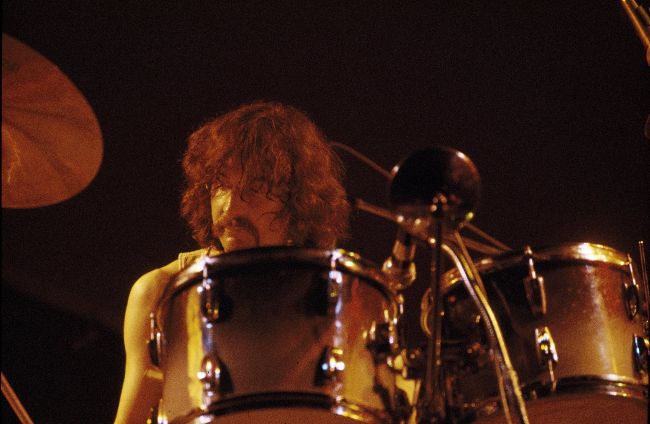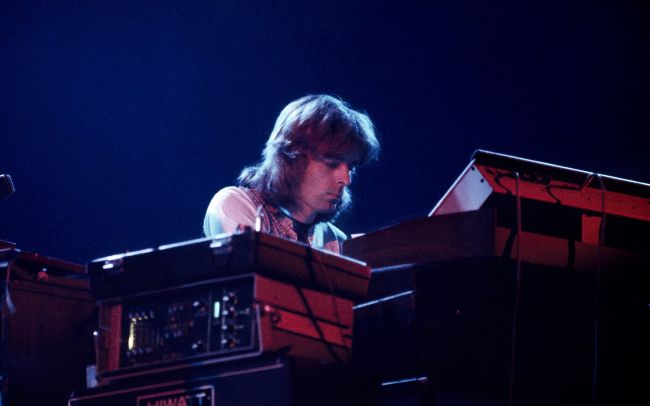ON THE SPECTRUM
ON THE EVE OF ITS GOLDEN JUBILEE, MOJO CELEBRATES THE DARK SIDE OF THEMOON, THE ROCK MASTERPIECE THAT DARED, AS ONLY PINK FLOYD COULD DARE, TO ENCAPSULATE THE ENTIRETY OF HUMAN EXISTENCE. FIFTY YEARS SINCE ITS RELEASE, JOIN WRITERS AND MUSICIANS ON A VOYAGE INSIDE ITS SONGS AND STORIES: “IT’S STOOD THE TEST OF TIME BECAUSE OF THE SPIRIT AND EMOTION WHICH WENT INTO IT.”
PORTRAITS BY JILL FURMANOVSKY.
FEATURING:
▲ BACK IN THE DSOTM: ALAN PARSONS RE-IMMERSES
▲ GREAT GIG!: PP ARNOLD ON CLARE TORRY
▲ OVER THE RAINBOW: THE WIZARD OF OZ MASH-UP, EXPLAINED
▲ PRISM DIARIES: THE STORY OF THE SLEEVE

Jill Furmanovsky (4)

Remember to breathe: Pink Floyd boldly going, The Dark Side Of The Moon Tour, 1974 (clockwise from bottom right) Richard Wright, Nick Mason, David Gilmour, Roger Waters.
IN 2022, WHAT WAS ONCE THE NORTH POLE PUB ON NORTH London’s New North Road is called the No Such Place. Resplendent in trendy clashing colours and retro furniture, it features gastro grub and, in a corner, a bright red baby grand piano. Perhaps its new incarnation will last longer than its predecessor, the North By Northwest, whose bizarre Alfred Hitchcock theme was, it’s fair to say, lost on the majority of Islington drinkers. But it’s pretty much guaranteed to predecease the artefact dreamed up in the adjacent property, 50 years ago.
Because it was here, in the terraced house then occupied by Pink Floyd bassist Roger Waters and his wife Judy – and also in its shed – that The Dark Side Of The Moon first took shape. Here, between visits next door for pints of Guinness, Waters brooded on themes of life and death, money and madness, and toyed with loops of musique concrète, while beginning songs that would combine the group’s familiar eccentricities with a new directness and emotional heft.
In rehearsal, and on tour from January 20, 1972, material destined for the album was honed – music that showcased all the unique skills of the band: the pelagic swell of the Roger Waters-Nick Mason rhythm section; the keening melodies of guitarist-vocalist David Gilmour; the kaleidoscopic blooms of keyboard player Rick Wright; the iron will and acerbic worldview of Waters in Chief Writer mode – the man who would later bill himself, with pointed provocation, “The Creative Genius Of Pink Floyd”.
Between May 31, 1972 and February 9, 1973 Floyd committed final versions of the songs to tape at Abbey Road, with the help of engineer Alan Parsons and, later, ‘mix-consultant’ Chris Thomas. The songs gained new coups de théâtre: the novel synth work of On The Run; Clare Torry’s spinetingling vocal on the The Great Gig In The Sky; the spoken-word segments that added pungent elements of real-life documentary. The results were seamlessly blended into a single listening experience and benefited from Studio 2’s recent upgrade to 16-track recording. This was the classiest-sounding rock record yet, in the most elegant package yet conceived.
It was an instant hit – asensation way beyond Floyd’s original underground constituency – and has remained one. Exploring the songs today, as MOJO writers do over the following pages, the reason is crystal clear. In defiance of an intra-band culture that could seem, and continued to seem, unsympathetic, The Dark Side Of The Moon’s ability to move the heart and engage the mind, to offer dread and consolation in equal measure, has never faltered.
SIDE ONE
SPEAK TO ME/ BREATHE (IN THE AIR)
TOM DOYLE hymns the two-part overture where all of The Dark Side Of The Moon’s themes are unveiled.
It starts with a slow-motion fade-in: Nick Mason’s muted bass drum, through slapback echo, imitating a heartbeat, giving the effect of the listener bringing a stethoscope closer and closer to his or her ears. For those who’d dropped the needle into the Side One groove of The Dark Side Of The Moon for the very first time, there was of course no way of knowing that Speak To Me, a minute-long musique concrète overture, was a précis of several of the album’s themes: madness (via the spoken words of band roadie Chris Adamson and Abbey Road doorman Gerry O’Driscoll), time (the metronomic ticking), and money (the chinging of cash registers).
Ushered in by laughter, screaming and a backwards piano chord, Breathe introduces a leisurely groove and a sonic palette – electric piano, picking guitar – that reinforces the idea that Dark Side is in some way a soul album (albeit one with country fringes: see David Gilmour’s weeping pedal steel here). If the opening lines, written by Waters, sung by Gilmour (“Breathe, breathe in the air/Don’t be afraid to care”) give off what was in 1973 a markedly hippy-ish vibe, then it soon becomes clear that a song titled Breathe is equally about suffocation.
The idea of squandered years will return later on the record, but here it’s focused on endless, perhaps pointless toil (“Dig that hole…/Don’t sit down, it’s time to dig another one”). A track that on the surface sounds carefree and breezy, Breathe wears the heaviness on its shoulders deceptively lightly, before the slam of its closing line, and that “race towards an early grave”.
ON THE RUN
Former Kraftwerk robotnik KARL BARTOS swoons over Floyd’s synth innovation. DAVID BUCKLEY takes note.